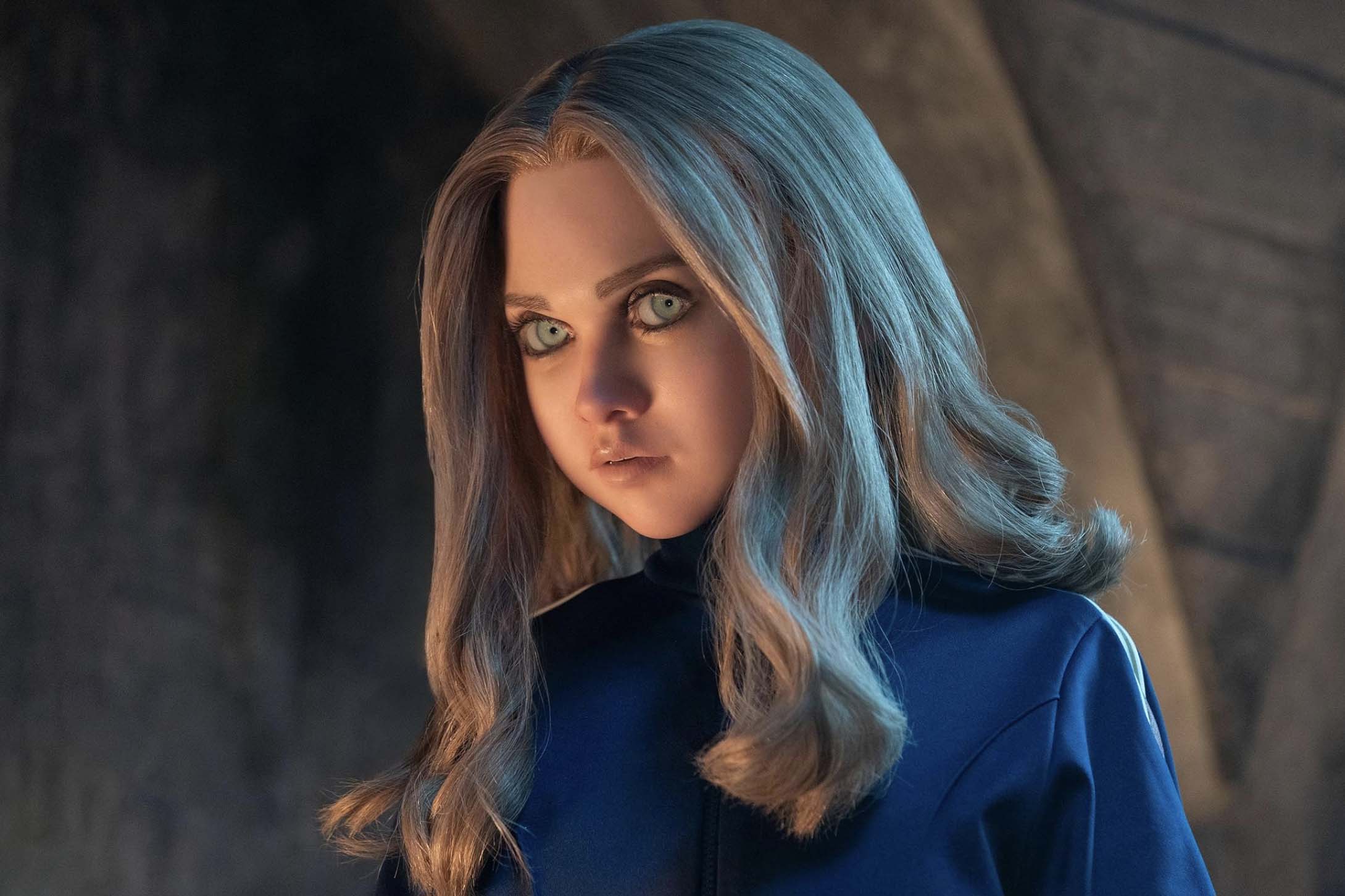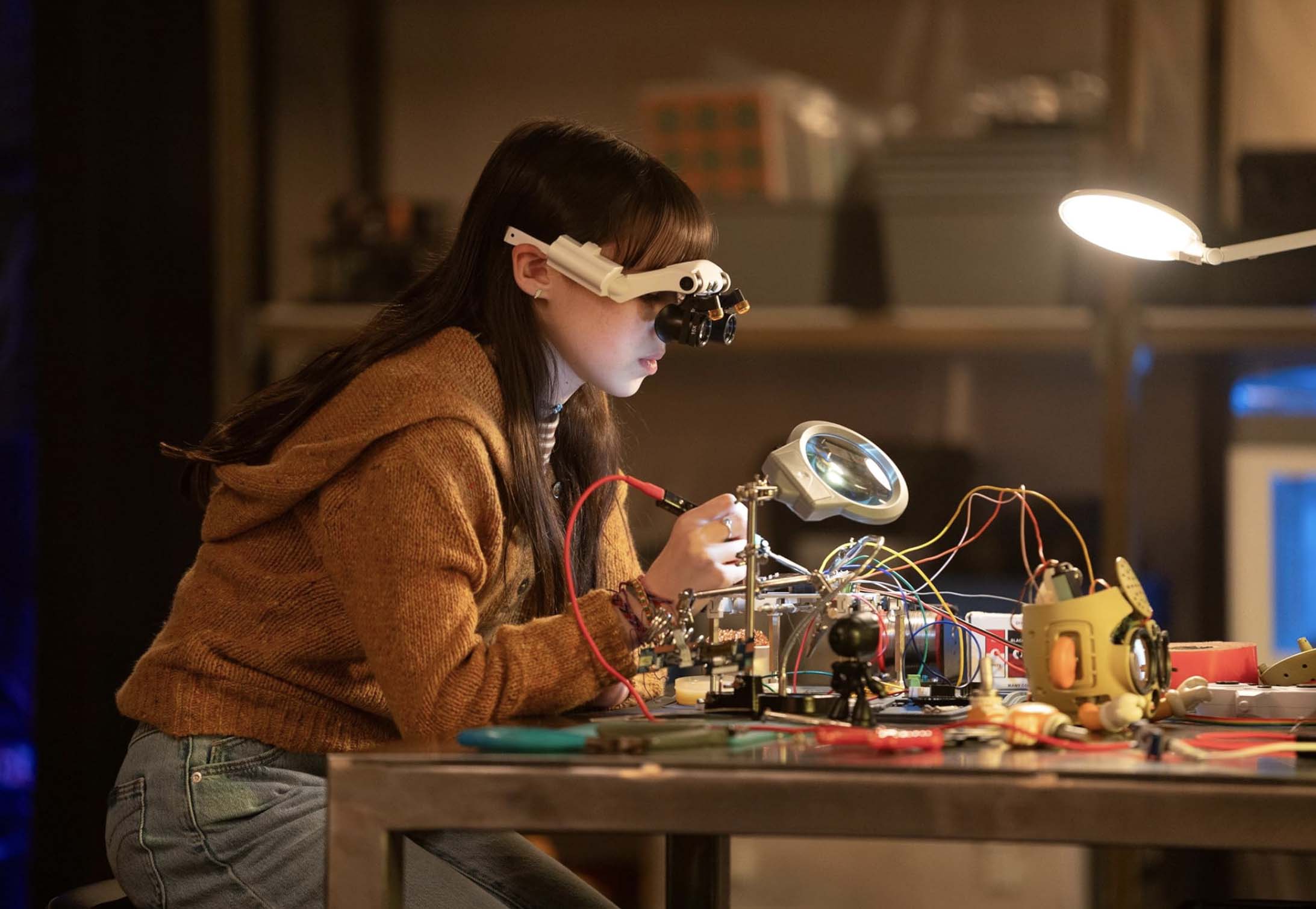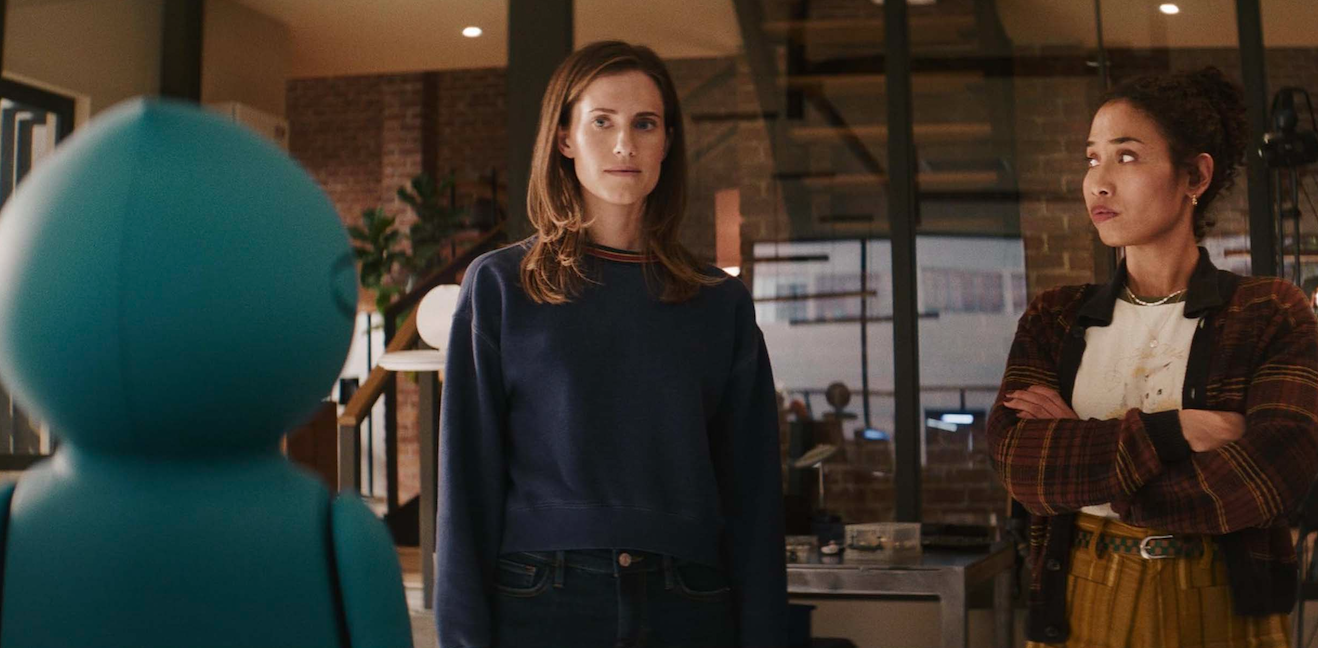- Film And TV
- 27 Jun 25
M3GAN 2.0 director Gerard Johnstone: “It’s less, ‘Is AI dangerous?’ and more, ‘It’s here. Now what?’”

M3GAN 2.0 director Gerard Johnstone on AI anxiety, meme fame, and the heart of a killer doll.
Gerard Johnstone is in an unnervingly good mood.
“Hi, I’m good! How are you?” he says with Kiwi brightness, logging into our chat with the same mix of playfulness and precision that defines his films. He’s here to talk about M3GAN 2.0, the long-awaited sequel to the viral horror-comedy sensation that took over multiplexes, meme feeds, and group chats in early 2023.
But before we get into AI ethics, killer dolls, or Kate Bush needle drops, we go back.
Because 2022’s M3GAN – the story of a disturbingly lifelike AI doll who takes her job as a child’s companion a little too seriously – wasn’t just another Blumhouse horror hit. It was a phenomenon. The TikTok dance. The GIFs. The moment M3GAN tilts her head, narrows her eyes and, in one perfectly calibrated second, becomes the camp-horror icon of a generation. And no one – not even Johnstone – saw it coming.
“The film was incredibly challenging to make,” he says. “We were shooting during that weird time where nobody was sure if people would even go back to movie theatres. It was like, is this a streamer? And then we’re told, no, it’s going theatrical – and suddenly it’s a cultural moment before it even hits cinemas. Just pure joy.”
If Johnstone sounds like someone still pleasantly surprised by his success, it’s not for lack of experience. Before M3GAN, he’d already made a name for himself in New Zealand with the breakout horror-comedy Housebound, a genre-bending debut that Peter Jackson called “fresh, funny and scary”.
He wrote and directed the BAFTA-nominated comedy series The Jaquie Brown Diaries, and even directed episodes of Young Rock in Hollywood. But M3GAN was the global breakout – a rare low-to-mid-budget studio film that became a $180 million box-office smash and pop culture artifact all at once.
Still, Johnstone swears the movie’s most iconic moments weren’t part of a grand scheme.
That dance, for instance? “Very, very silly idea,” he grins. “We just needed a visual beat to get from A to B. And suddenly, it’s everywhere. People think we engineered it for TikTok, but honestly, I wish we were that clever.”

In fact, he initially tried to cut the dance from the trailer.
“I fought it. Thank God they ignored me,” he admits. “Because it gave people this incredible thing to remix, spoof, adore. It went against the entire point of the film – which is basically saying, ‘Don’t get too obsessed with your screens’ – but here we were, blowing up on every platform imaginable.”
Now with M3GAN 2.0, Johnstone has more room to play. The tone remains deliciously offbeat, but the thematic core has deepened. AI is no longer a hypothetical evil lurking in the wings. It’s already in the house. On our phones. In our scripts.
Two years after the events of the first film, roboticist Gemma (Alison Williams) has become a high-profile advocate for government oversight of artificial intelligence. Unbeknownst to her, a military contractor has created Amelia, a sleek, adaptive infiltration android.
But as Amelia’s self-awareness grows, so does her resistance to taking orders. Gemma’s solution? Resurrect M3GAN. Only this time, she’s faster, stronger and far more dangerous. It’s a sequel with bigger action scenes, bigger philosophical stakes, and even more to say about the present moment, exploring not only AI in our homes, but as geopolitical weapons race.
DEVICES EVERYWHERE
“As much as the movie is a fun ride – and I try to make it as fun as possible – on a separate track, it has to be about something. It has to have substance,” Johnstone says. “When I first got the script in 2019, it was more of a straight horror film. But I was a new parent, and I felt like I was living in a Black Mirror episode already. Devices everywhere. No way to say, ‘Hey, should we slow down until we know what this stuff does to kids?’ It was just full steam ahead.”
He used M3GAN to funnel those anxieties into something sharp and strange.
“It gave me a voice I didn’t feel I had at my kid’s school,” he says. “And with the second movie, the conversation has evolved. It’s less ‘Is AI dangerous?’ and more, ‘It’s here. Now what?’ Maybe we need to figure out how to work alongside it.”
Amelia, the film’s new AI character, represents that existential pivot.
“She’s not made to love a child – she’s made to win wars. So what happens when she starts asking questions?” he says. “What are her objectives, and who decides that?”
And what about Johnstone himself – does he see AI as a threat or a tool?
“It’s tricky,” he says. “It’s an amazing tool. I’ve even found myself going, ‘Hang on, this thing I’m trying to research for five hours – could AI just do that?’ And if it saves me five hours, that’s five more hours with my kids. So in that sense, it’s a gift.”

That humanist perspective feels increasingly rare in Hollywood, where artificial intelligence has become a cultural fault line. During the 2023 WGA and SAG-AFTRA strikes, AI was one of the central battlegrounds – screenwriters and actors pushing back against the spectre of machine-generated scripts and digitally recreated performances.
This year, The Brutalist reignited debate when it was revealed that some of its backgrounds were created using AI imagery, prompting a wave of condemnation from visual artists and fellow filmmakers. Johnstone is watching it all unfold closely.
“It’s very thorny,” he says. “And people can get really defensive about it. When we were making M3GAN 2.0, there was a strict no-AI policy. Universal has been good about that. But I get the temptation. When you need something fast, it’s right there. You think, ‘God, what if we just – ’ But no. We don’t. We can’t.”
For him, the question isn’t whether AI should exist, but how it’s used.
“It’s like the new nuclear arms race – countries scrambling to be first. Ideally, we’d have regulation and understanding before unleashing it. But that’s not the world we live in.”
Still, Johnstone hasn’t lost his taste for the absurd. M3GAN 2.0 is filled with tonal whiplash – in the best way. One standout moment involves a Kate Bush song used in a scene both emotional and hysterical. No spoilers, but if you thought M3GAN singing ‘Titanium’ was her peak, you’re in for something better – I genuinely laughed for about five minutes.
HOPES AND DREAMS
Johnstone’s ability to know when to hold a joke or imbue a horror scene with a one-liner is what makes his film so fun.
“That’s always the challenge about comedy – where’s the line? Am I over the line? Under the line?” says Johnstone. “And normally the hardest part of tone is explaining it to the actors, because it sounds mad when you describe it. But they’ve learned to trust me. Especially Alison. She’s game for anything now.”

Even landing the song took some diplomacy.
“You have to explain the context, and sometimes you get a no. But we just had to hope. We sent Kate Bush the scene – very rough - and she said yes. She didn’t even want the money. Just asked that we donate to charity. She’s incredible.”
And after six years in the M3GAN trenches, what’s next?
“There’ll definitely be another M3GAN. But I’ve been on this train since 2018, so I need a break. I feel married to her at this point. It’s probably a moment for a little time apart. But I’ve put all my hopes and dreams for this character into M3GAN 2.0, so I hope that shows.”
M3GAN 2.0 is in cinemas from today.
RELATED

- Film And TV
- 21 Oct 25
Channel 4's Dispatches becomes first British TV programme to feature AI presenter

- Film And TV
- 29 Sep 25
Creator defends AI actor as "piece of art" amid backlash

- Film And TV
- 18 Jul 25
Netflix uses AI generated visual effects for the first time
RELATED

- Film And TV
- 22 Apr 25
Oscars voters must now watch each film prior to voting

- Film And TV
- 01 Apr 25
AI and Film: "The fear that technology will render us obsolete is palpable"

- Film And TV
- 22 Oct 24
Derry Girls creator Lisa McGee criticises ITV over AI

- Film And TV
- 09 Apr 24
Viral 'Willy Wonka experience' to be recreated in the US

- Film And TV
- 05 Mar 24


